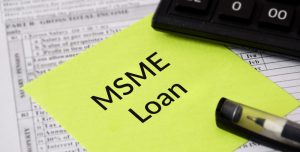6 Tax Mistakes Rideshare Drivers Make – And Tips On How To Avoid Them

Ridesharing is one of the popular industries today. In fact, the number of ridesharing users worldwide is expected to increase to close to 700 million with revenue amounting to $109.050 million by 2022. Because of this, it’s not surprising that many people are turning to ridesharing to help them manage their time while earning a good amount of money.
If you happen to join the bandwagon, then there’s something you need to take care of: taxes. You are now a business owner in the eyes of IRS and rideshare taxes should be on your priority list.
Check out these common tax mistakes committed by rideshare drivers with tips on how to avoid them:
Not Tracking The Mileage
Did you know that standard mileage deduction could be your biggest deduction as a driver? Unfortunately, most rideshare drivers rely on the mileage numbers reported by Uber and Lyft. While this seems convenient, it doesn’t reflect your actual logs that are deductible.
To avoid this, use apps that automatically track and categorize your actual mileage. If you want to do the old school way, have your own mileage logbook to track your actual miles. Otherwise, you might be committing this next mistake.
Deducting Too little Or Too Many Miles
Uber and Lyft will tell you the number of miles you drove when you logged in the Driver Mode, but this doesn’t necessarily reflect your actual miles. In fact, the miles could be lower, which means you reduce your tax savings.
Consequently, deducting too many miles than the actual number is tempting to increase your tax savings. This is a dishonest practice and something you cannot get away from when IRS conducts an audit.
To avoid this, make sure to log and track your miles either through apps or by writing it down in your mileage logbook. Remember, honesty goes a long way, so deduct only what you are entitled to.
Other Deductions Not Known To Many Ridesharing Drivers
Aside from mileage, did you know that there are other expenses considered as deductible? This includes:
- Cost for initial inspection and background check before you can drive for Uber
- Goodies you buy for passengers
- Amount paid for car cleaning
- A Portion of cell phone bill, which you use to contact your passengers
To avoid this, take note of these additional expenses that can be deductible and include them as a business expense. This will help reduce your tax rate and lower your income tax. Again, be honest and only deduct those expenses that pertain to ridesharing.
Incorrectly Declaring Income
When reporting income, most rideshare drivers either add all weekly payments and report it as income or report gross fare figures without deducting Uber and Lyft’s fees and commissions, which are actually considered as a business expense.
This is wrong because ridesharing companies report gross earnings and the amount they took from you, thereby causing the discrepancy. Not deducting the fees also equates to higher taxable income, which also means higher tax to be paid.
To avoid this, deduct the fees from your gross earnings (business income) for proper net earnings amount. This will avoid discrepancies in the records as well.
Standard Mileage Deduction Does Not Match Actual Vehicle Expenses
Vehicle expense is the biggest deduction ridesharing drivers take. There are two ways to do this:
- Standard mileage deduction (53.5 cents per mile as of 2017) that includes all vehicle-related expenses like cost of fuel, insurance, maintenance, and depreciation
- Actual vehicle expenses
Many drivers use standard mileage deduction without computing actual vehicle expenses since they believe that the standard deduction is always higher than actual expenses. Apparently, that’s not always the case. Major vehicle repairs or driving a more expensive car always mean higher actual vehicle expenses.
To avoid this, always track all vehicle-related expenses and mileage incurred during the year. Keep receipts of expenses paid so you have something to go back to. During tax season, compare the amount you get from standard mileage deduction to actual vehicle expenses and report whichever deduction is higher.
Non-Filing Of Income Tax Return
Believe it or not, this is common. Many ridesharing drivers either don’t file income tax return at all or exclude the income they get from ridesharing because of the additional computations. Aside from this, ridesharing drivers are not prepared and start getting intimidated instead of learning the ropes.
Although we agree that taxes are stressful and numbers are complicated, these are not enough to justify non-filing of income tax return. In fact, delaying the filing of several years worth of income tax return is more stressful and complicated than doing your responsibility every taxable year. Plus, you don’t want to pay penalty fees for something you can do early on.
To avoid this, do not procrastinate and file your taxes on time. Prepare everything at least two months before the start of tax season to avoid any delay in the filing. This is part of your responsibility and contribution to the government, so don’t miss out before it’s too late.
With these tips in mind, are you ready to file your income tax return?






